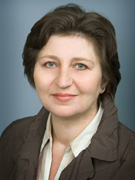The tragic story of how one third of Lithuania’s population became victims of Soviet terror

Dalia Kuodyte.
This article is based on a speech manuscript by Dalia Kuodyte,
Member of the Parliament, former Director General of the Centre of Genocide and Resistance (LGGRTC).
“In the trains’ cattle cars the passengers were hardly given any food except from a little water and some inedible soup. There was scarcely any air to breathe as everyone was jammed together and the cars had only a few small windows covered with bars. A hole in the floor served as a toilet. Some of the people, especially the infants became sick immediately and died. The bodies of those who died on the journey were left on the side of the tracks.”

The string of tragedies began in August 1939, when Hitler and Stalin concluded a cynical agreement that divided up Central Europe between the two totalitarian countries. According to the Molotov-Ribbentrop pact, Lithuania was to fall into the Soviet zone of influence.
After the outbreak of the Second World War, Lithuania was occupied three times: first by the USSR in 1940, then by Nazi Germany in 1941, and finally by the USSR again in 1944.
Pre-war Lithuania’s position of neutrality on the eve of WWII did not protect the country from its sad fate. According to Lithuanian state institutions, the damage caused by the USSR‘s occupation to the Republic of Lithuania in financial terms is $278 billion. During Nazi and Soviet occupations, including 200,000 Holocaust victims, the losses of the population of Lithuania amounted to 33 percent of the total number of the country’s population in 1940. Lithuania lost 1 million people to deportations, executions, incarceration, the murder of the political opposition and forced emigration.
The total number of persons registered as “anti-Soviet elements” reached 320,000 entries. There were teachers and professors, school and college students, farmers, industry workers and craftsmen among them.
June 14-18, 1941 were the dark days of the first massive arrest and deportation of the Lithuanian population. A cargo of 16,246 people were crammed into cattle cars. Moscow’s instruction required separate men from their families. So, 3,915 men were separated and transported to concentration camps in the Krasnoyarsk territory while 12,331 women, children and elderly people were transported to the Altai Mountains territory, the Komi republic and to the Tomsk region.
Forty percent these deportees were children below 16 years old. More than half of the deported died quickly. Pregnant women and babies born in the cattle cars were the first victims – they died in the trains. The deportation process was interrupted by the German-Soviet war.
The Soviets resumed mass deportations to Siberia and other eastern regions of the USSR after recapturing Lithuania from Nazi Germany in 1944. The partisan anti-Soviet war for democratic and independent Lithuania began in 1944. Some 22,000 Lithuanian partisans lost their lives in unequal war against the Soviet regular army and NKVD units. From 1949 the armed resistance started to wane. This guerilla war continued until 1953. The last resistance fighter refused to surrender and shot himself in 1965.
Partisans, their supporters and non-armed opposition made up a big group among those who were deported in 1945 – 1947. Another big group of deportees was those who tried to escape service in the Red Army. Ethnic Germans and members of their families, who did not leave Lithuania, were deported as well.
The situation changed in 1948. The most extensive deportation from Lithuania was held on May 22 and 23, 1948. Over these two days 12,100 families, numbering over 41,000 people, were seized from their homes and exiled. In 1948, 50 percent of deportees were accused not of their relations with the armed guerillas. Their official guilt was their social class – they were owners of private farms. In 1949, already two-thirds of the deportees belonged to this category while in 1951 they absolutely dominated the Soviet secret police‘s statistics.
Such change was due to the collectivization campaign in the Lithuania’s countryside. In 1948, the Soviets started to implement mass collectivization, appropriating land and livestock. This resulted in establishment of kolkhozes. In 1950, some 90 percent of land was given to kolkhozes. Mass deportations continued until the death of Josef Stalin in 1953.